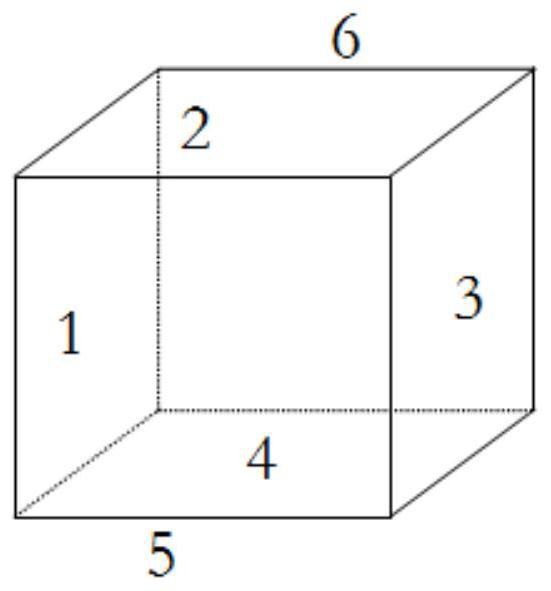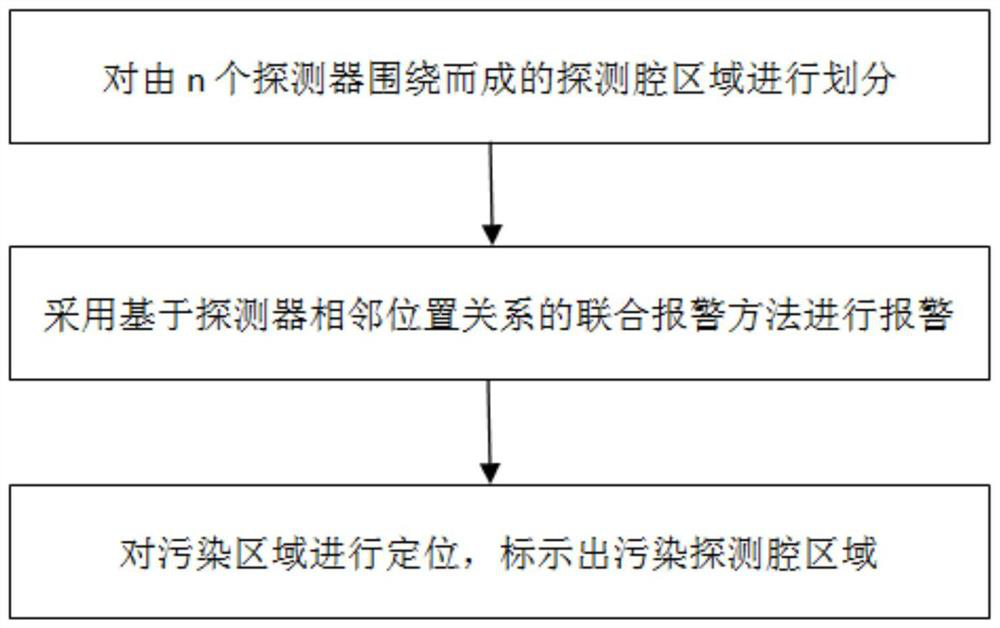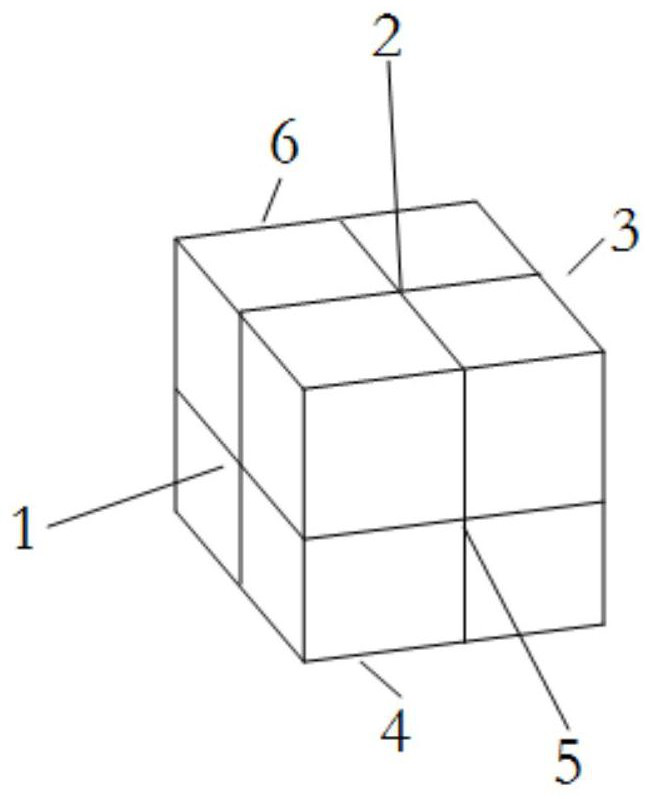Combined Alarm and Pollution Area Division Method Based on Adjacent Position Relationship of Detectors
A technology of adjacent locations and polluted areas, applied in the directions of alarms, measuring devices, instruments, etc., can solve the problems of detectors unable to identify polluted areas, low radiation detection sensitivity, etc., to achieve targeted decontamination and intuitive pollution display. , the effect of improving sensitivity
- Summary
- Abstract
- Description
- Claims
- Application Information
AI Technical Summary
Problems solved by technology
Method used
Image
Examples
Embodiment
[0048] Such as figure 1 As shown, 6 detectors surround the detection cavity,
[0049] (1) The numbers are: 1~6;
[0050] (2) The background counts of each detector are: N 1 ~N 6 ;
[0051] (3) The radioactive source is placed at the geometric center of the measurement cavity, and the efficiencies of each detector are: ε 1 ~ε 6 ;
[0052] (4) During the measurement process, the net count of each detector is: R 1 ~R 6 ;
[0053] The positional relationship between the detectors is as follows:
[0054] (1) Two detectors are adjacent as follows:
[0055] (1,2), (1,4), (1,5), (1,6), (2,3), (2,5), (2,6), (3,4), (3 ,5), (3,6), (4,5), (4,6).
[0056] (2) The three detectors are adjacent as follows:
[0057] (1,2,5), (1,2,6), (1,4,5), (1,4,6), (2,3,5), (2,3,6), (3 ,4,5), (3,4,6).
[0058] (3) The four detectors are adjacent as follows:
[0059] (1,2,4,5), (1,2,4,6), (1,4,5,6), (2,3,4,5), (2,3,4,6), (3,4,5,6).
[0060] (4) The 5 detectors are adjacent as follows:
[006...
PUM
 Login to View More
Login to View More Abstract
Description
Claims
Application Information
 Login to View More
Login to View More - R&D
- Intellectual Property
- Life Sciences
- Materials
- Tech Scout
- Unparalleled Data Quality
- Higher Quality Content
- 60% Fewer Hallucinations
Browse by: Latest US Patents, China's latest patents, Technical Efficacy Thesaurus, Application Domain, Technology Topic, Popular Technical Reports.
© 2025 PatSnap. All rights reserved.Legal|Privacy policy|Modern Slavery Act Transparency Statement|Sitemap|About US| Contact US: help@patsnap.com



